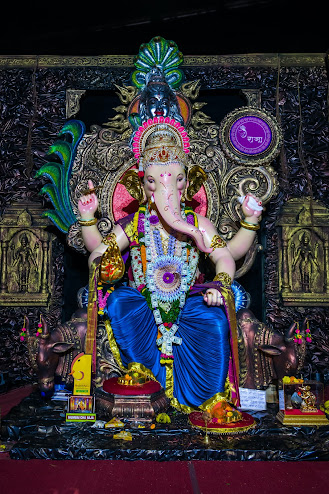The divine figure of Lord Ganesha, with his unique amalgamation of human and elephant features, has captivated the hearts of millions across the world. Known as the remover of obstacles and the god of wisdom, Ganesha’s distinctive elephant head is a subject of fascination and curiosity. In this blog, we will delve into the ancient myths and symbolic representations to understand the profound significance of this iconic aspect of Lord Ganesha.
The Mythical Tale
The origin of Lord Ganesha’s elephant head can be traced back to the Hindu mythological story of Parvati, the goddess of power, and her devoted son, Ganesha. One day, while Parvati was bathing, she decided to create a guardian to protect her privacy. She molded a boy out of turmeric paste and breathed life into him. She instructed him not to allow anyone to enter the area while she was bathing.
When Lord Shiva, the consort of Parvati, returned home, he was surprised to find a young boy denying him entry. Not recognizing Ganesha as his own son, a battle ensued between them. In a fit of rage, Lord Shiva severed the boy’s head. Upon realizing that the boy was his son, he was filled with remorse and decided to make amends.
The gods intervened and suggested that Lord Shiva should replace the severed head with the first living being he encountered, which happened to be an elephant. Thus, Ganesha was granted an elephant head, and his life was restored. This tale illustrates Lord Ganesha’s resilience and symbolizes the cycle of life, death, and rebirth.
The Symbolic Interpretations
The elephant head of Lord Ganesha holds profound symbolism, revealing deeper spiritual meanings.
a) Wisdom and Intelligence: Elephants are revered for their intelligence and memory. By adorning an elephant head, Ganesha represents the embodiment of wisdom and intellectual prowess. It reminds us to seek knowledge and understanding in our pursuit of life’s journey.
b) Remover of Obstacles: The elephant head also serves as a metaphor for overcoming obstacles. Elephants are known for their strength, and Ganesha’s elephant head emphasizes the idea that with intelligence and strength, one can overcome challenges and hurdles in life.
c) Unity of Duality: The combination of human and elephant features in Ganesha’s form signifies the unity of the spiritual and material worlds. It reminds us to balance our spiritual aspirations with our earthly responsibilities.
Cultural and Historical Significance
The depiction of deities with animal features is common in various ancient cultures. In Hinduism, animals often symbolize specific traits or aspects of the divine. Ganesha’s elephant head exemplifies this practice, signifying the coexistence of diverse traits and characteristics in a single entity.
Moreover, the elephant has held immense cultural significance in India for centuries. It represents power, strength, royalty, and prosperity. By incorporating an elephant head, Lord Ganesha’s divine form is elevated with these qualities.
The Inner Meaning
Beyond the external narratives and symbolism lies a deeper, inner meaning behind Lord Ganesha’s elephant head.
The human body represents the physical realm, and the head symbolizes the mind and intellect. In contrast, the elephant head signifies a heightened consciousness, transcending ordinary human awareness. This aspect urges us to rise above our limited understanding and embrace a higher level of consciousness.
The universality of Lord Ganesha’s symbolism extends beyond Hinduism. His image has transcended cultural and religious boundaries, becoming a recognized symbol of wisdom, intellect, and good fortune worldwide. In recent years, Ganesha’s image has gained popularity in Western cultures as a spiritual icon, transcending religious affiliations.
Lord Ganesha’s iconic elephant head serves as a beautiful representation of the richness and complexity of Hindu mythology. It goes beyond being a mere fantastical tale and carries profound lessons about wisdom, resilience, and unity. The combination of human and animal features reveals the eternal quest of humankind to transcend its limitations and seek divine wisdom.
Whether one views Lord Ganesha as a religious figure or a symbol of universal values, his elephant head remains a timeless and awe-inspiring aspect that continues to inspire and intrigue people across the globe. Embracing the essence of Ganesha’s message, we can find strength, wisdom, and the determination to overcome obstacles in our own lives, making our journey on this earth a more enlightened and fulfilling one.


